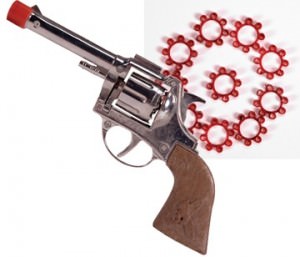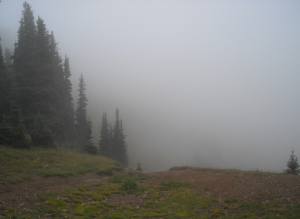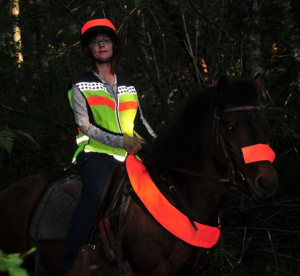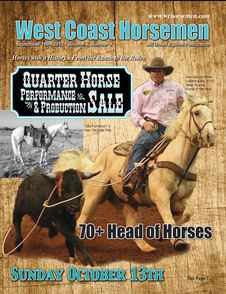 Hunting Season Safety For Horse and Mule Owners and Riders
Hunting Season Safety For Horse and Mule Owners and Riders
As published in the September 2013, issue of West Coast Horsemen Magazine
Summer’s sultry heat is finally giving way to pleasant autumn weather in most of America. The leaves are turning glorious shades of gold and red that contrast beautifully against a deep blue sky as you make your way down a forested trail on a crisp cool day. Before you load the trailer there are a few things to consider. Fall is not only a great time for trail riding; it’s also the start of hunting season across the U.S. And the riding during this time of the year is entirely too excellent to be avoided because it overlaps with hunting season. These hunting season safety guidelines will allow you to safely share the woods and stay on the trails till snowfall, or beyond.
As with most things equine, hunting safety starts well before hunting season and involves conditioning your horse for the sights and sounds that he may encounter. Riding during hunting season means that you and your mount will most likely hear gunfire. A horse that spooks uncontrollably at the sound of a rifle being discharged is a hazard to himself and to you. While it’s normal for a horse to baulk or shy at the sound of a gun how do you help your horse overcome that fear? To make the noises of hunting season more bearable to your mount we can use the same techniques that Cowboy Mounted Shooters use to train their horses.
 At home, where you can control your horse more effectively, start by firing a cap gun. Start shooting the gun at a distance then slowly work closer to the horse. (Note: Never point the any gun at your horse.) Be sure to reward your horse for standing calmly. Once he handles a cap gun with no problem you can increase the intensity by using louder devices such as a starter pistol. Unless you’re considering competing in Cowboy Mounted Shooting I would not recommend that you try firing any weapon while on your horse. Without the extensive practice that these folks put into their sport you may be able to shoot while in the saddle; once.
At home, where you can control your horse more effectively, start by firing a cap gun. Start shooting the gun at a distance then slowly work closer to the horse. (Note: Never point the any gun at your horse.) Be sure to reward your horse for standing calmly. Once he handles a cap gun with no problem you can increase the intensity by using louder devices such as a starter pistol. Unless you’re considering competing in Cowboy Mounted Shooting I would not recommend that you try firing any weapon while on your horse. Without the extensive practice that these folks put into their sport you may be able to shoot while in the saddle; once.
Not only is now a good time to get your horse ready for hunting season it’s also a good time to prepare your horse facility. There are several steps that you can take to keep your horses from being mistaken for an elk, deer, or other large game animal during hunting season. These simple steps will help to identify your horse as a domesticated animal, rather than as a potential target.
 As with our own safety, visibility for our animals is key to their wellbeing. Avoid turning animals out during periods of poor visibility, such as dawn or dusk, or during foggy weather. If you can, keep them in pens or pastures close to your house and barnyard during hunting seasons, rather than in outlying fields. To make sure your horses are easily identifiable as domestic animals, brightly colored cloth or ribbon can be braided into manes and tails. There are even pasture safe vests made of bright materials that will keep your animal from being mistaken for a deer.
As with our own safety, visibility for our animals is key to their wellbeing. Avoid turning animals out during periods of poor visibility, such as dawn or dusk, or during foggy weather. If you can, keep them in pens or pastures close to your house and barnyard during hunting seasons, rather than in outlying fields. To make sure your horses are easily identifiable as domestic animals, brightly colored cloth or ribbon can be braided into manes and tails. There are even pasture safe vests made of bright materials that will keep your animal from being mistaken for a deer.
Once home has been “hunterized” it’s time to consider your ride. Where and when you plan on riding will have a tremendous impact on how enjoyable a trip you have. Contact your state game department to find areas where hunters may be less concentrated. In western states where hunting season lasts for many months this will be much easier to accomplish. Riders in the more populated eastern states where deer season is much shorter, and more intense, may want to consider arena work for the few days that hunters are out in force.
Once you’ve decided on an area to explore where hunters may not be particularly concentrated, let’s consider the ride itself and what you can do to make sure that everyone else in the area can immediately distinguish between you and a game animal.
 The first thing you can do is to wear orange and lots of it. Hunter’s orange (also known as safety orange, blaze orange, and vivid orange) may not be a great fashion statement, but it can save your life. It’s also the law in many states across the country. Why orange? Simply put, because it is a very bright color that looks like nothing else in nature. Wearing vivid orange prevents hunters from mistaking a person or their horse for a game animal. Studies have shown that since people have been wearing orange, hunting accidents have decreased tremendously. Since it’s clear that that this high contrast color makes us more visible, we should wear as much of it as we can.
The first thing you can do is to wear orange and lots of it. Hunter’s orange (also known as safety orange, blaze orange, and vivid orange) may not be a great fashion statement, but it can save your life. It’s also the law in many states across the country. Why orange? Simply put, because it is a very bright color that looks like nothing else in nature. Wearing vivid orange prevents hunters from mistaking a person or their horse for a game animal. Studies have shown that since people have been wearing orange, hunting accidents have decreased tremendously. Since it’s clear that that this high contrast color makes us more visible, we should wear as much of it as we can.
Since you may want to dismount at some point, you’ll also want to consider dressing your horse in hunter orange. There are many options available for covering your mount in safety orange; from saddle bags to halters, and everything in between. There are manufacturers of equine safety gear that make everything from nose bands to tail wraps that will make your horse stand out in any condition.
Once you’ve decorated yourself and your mount in orange and are enjoying a glorious crisp fall day on the trail it’s time to make some noise. Hunting season is not the time to be silent. Keep up a constant banter with your trail buddy or sing. Even better put bells on your mount. Bear bells work extremely well at alerting hunters of your presence. They may help keep bears and other predators away too!
Other actions you can do to include sticking to main trails, and open field, and avoiding denser areas where it is harder for hunters to identify you. By the same thought, making it easy for hunters to identify you, avoid riding during low visibility parts of the day such as dawn and dusk. And last but certainly not least; always carry a cell phone and keep it on your person. A phone in your saddle bags does you no good if you become separated from your horse. Also make sure that someone back at home knows where you’re riding and when you expect to return.
Now that you’re properly prepared and outfitted for a safe hunting season trail ride let’s take a quick moment to consider the hunters that you’re sharing the trails with at this time of year. Should you come across a hunter on your ride, you may want to give them a quiet thank you for their contribution in keeping your access to the trails open. The primary drivers in creating the National Forests, Wilderness areas, and many public lands, were the naturalists and hunters of the early 1900’s. So although hunting may not be your sport of choice, the contributions of hunters greatly add to the preservation of wild areas that we all can enjoy.
hope that you’ve enjoyed these hunting season safety Tips to help keep you and your mount safe during hunting season. As always for more information on this topic as well as many others of interest to trail riders please visit www.TrailMeister.com the largest directory of horse trails and camping areas in North America.


